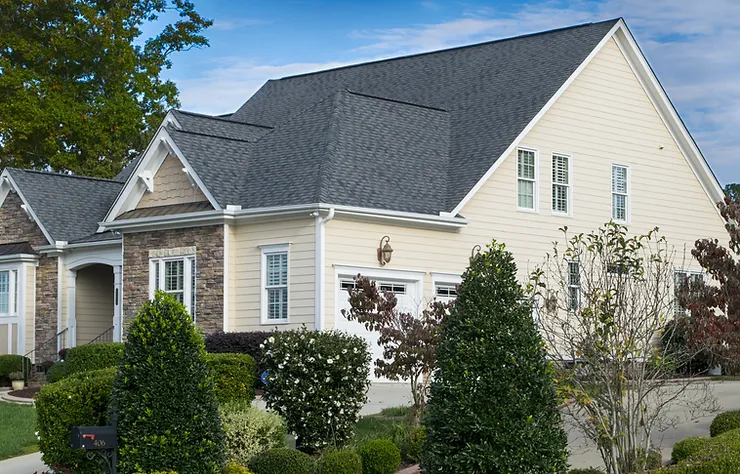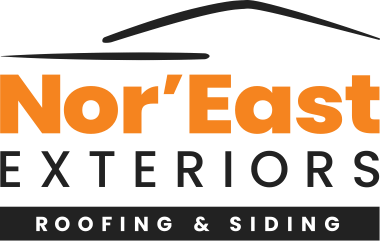Choosing the right roofing material for your home can be a tedious process. With several options to choose from, it is important to consider your budget, the home’s environment, and the aesthetic of your property. Additionally, each roof is unique and may pose challenges to accommodating different roofing materials.

Here are some of the most common roofing materials:
- Asphalt Shingles: Asphalt shingles are by far the most common roofing material in the United States. In fact, over 75% of North American homes are furnished with this option. They are popular for their durability and affordability. On average, a well-installed asphalt system will last 30 years. With several color and style options to choose from, shingles can easily accommodate unique design ideas. However, the lifespan is less than other roofing materials, which can deter eco-conscious homeowners.
- Metal Roofing: Metal roofs are becoming increasingly popular across the country, but especially in the Northeast due to their durability and energy efficiency. Metal roofing comes in several different styles, including standing seam and corrugated systems. This is also a great option for eco-consious homeowners as metal roofs are 100% recyclable. However, metal roofing is more expensive than asphalt and requires specialized installation techniques.
- Slate Roofing: Slate roofing is a natural stone roofing option that is extremely durable and aesthetically appealing. It is often showcased on historic buildings across the Northeast. Due to the nature of this material, it is very expensive and difficult to install, which adds to the cost of the product. Slate roofs are known to last up to 100 years with proper installation.
- Wood Shake Roofing: Wood Shake roofing is a commonly used material in coastal communities, especially in New England. Cedar is the primary choice of wood; however, other options, such as redwood and pine, are available. Wood roofs are known for their unique and naturally irregular patterns. There are many options available for the sizes of the panels and the natural color variations of the wood. These roofs are known to last up to 50 years with regular maintenance. However, this option is extremely costly and requires care to avoid rot and decay.
- Rubber & Synthetic Roofing: Synthetic roofing materials consist of several options, including Modified Bitumen and EPDM (Ethylene Propylene Diene Terpolymer). These are commonly seen in commercial or low-slope applications. Although these options are not always as aesthetically pleasing as their counterparts, they are efficient in protecting against standing water on flat surfaces. They are typically cost-effective and last up to 20 years, depending on the material and installation.
Each option boasts unique advantages and disadvantages that make them work for specific applications. It is important to consult a local contractor before making any decisions to ensure you are using the right materials for your project. Each building is unique and may require specific accommodations for a quality installation. Nor’East Exteriors Roofing & Siding is a trusted roofing contractor in Connecticut. We are happy to answer any questions you may have.

